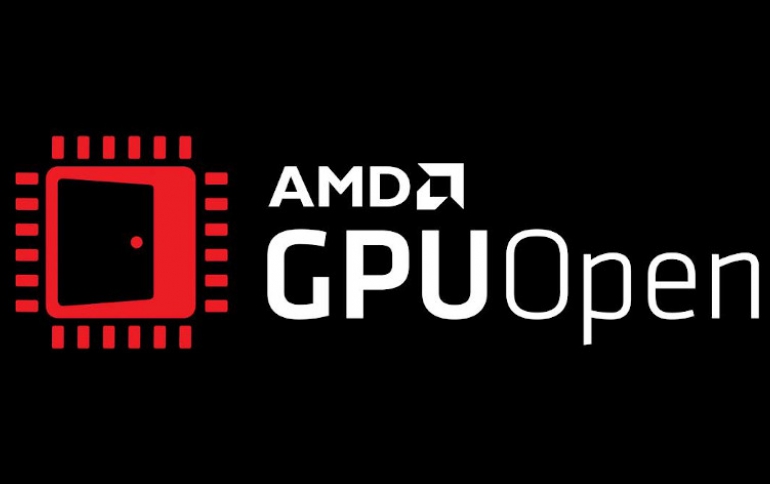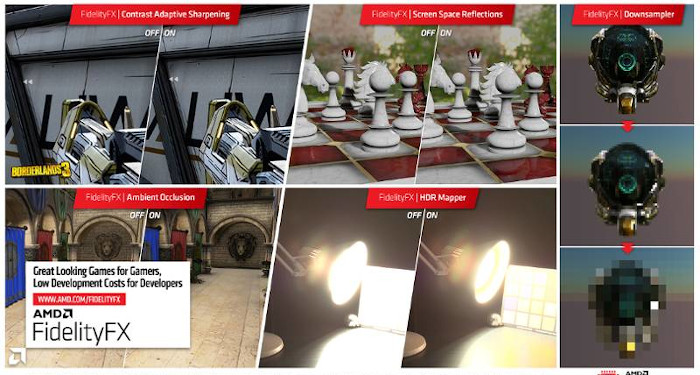
AMD Redesigns GPUOpen Website, Releases New AMD FidelityFX Effects
AMD has relaunched GPUOpen.com, building a new website with a modern look and feel. The copmpany has also released new AMD FidelityFX effects.
Since 2016, GPUOpen has been a vehicle for AMD’s vision to the openness of standards. The company has been
sharing game development and content creation software tools and technologies, with a focus on solving developer problems.
The relaunched GPUOpen.com website is more straightforward to navigate the information available, including the latest news, detailed tutorials and samples, presentations, and guest blogs. AMD's tools and technologies are clearly presented to enable developers to easily access what they need to make their games even better.
In 2019 AMD released its first AMD FidelityFX feature, Contrast Adaptive Sharpening (CAS). This effect is now used in over 15 games to enable better visual sharpness with minimal artifacts, restoring detail lost after Temporal Anti-Aliasing (TAA) is applied. Now the company is expanding FidelityFX into an open-source image quality developer toolkit with four additional shader-based features aimed at improving rendering quality and performance.

The four new open-source FidelityFX features available today are:
- FidelityFX Screen Space Reflections: AMD's implementation of Stochastic Screen Space Reflections (SSSR) delivers high-quality reflections with minimal overhead, via an optimized compute shader and RDNA architecture-optimized denoising.
- FidelityFX Ambient Occlusion: AMD's RDNA architecture-optimized Combined Adaptive Compute Ambient Occlusion (CACAO) effect dynamically and efficiently helps improve the appearance of objects based their exposure to ambient light.
- FidelityFX HDR Mapper: Optimized for use with AMD FreeSync Premium Pro1 displays, AMD’s Luminance Preserving Mapper (LPM) delivers superior HDR and wide color gamut content for games.
- FidelityFX Downsampler: Single-pass and optimized for RDNA architecture, AMD’s compute shader-based Single Pass Downsampler (SPD) generates texture MIP levels using asynchronous compute for optimal performance.
Next Level Physics and Hair Effects Demos
FEMFX is AMD's open-source CPU library for deformable material physics, using the Finite Element Method (FEM) and is available as source code and as a plug-in for Unreal Engine.
Optimized to take advantage of the processing power today’s modern multithreaded CPUs, FEMFX enables developers to add a new level of physics realism to their games.
TressFX is AMD's GPU-accelerated realistic hair and fur rendering and simulation technology and the new version 4.1 offers improved performance and new features, including Unreal Engine integration.
To make it easier for developers to see FEMFX and TressFX in action, and for gamers to be able to check out some of the effects they can expect to see in future game releases, AMD has put together some standalone demos that can be downloaded today.

For FEMFX, AMD has two demos – the “FEMFX Demo” is an interactive experience that shows off different FEM physics effects and the “Alien Pods” demo is an example of the gameplay puzzle mechanics that FEMFX could enable.
For TressFX, the “Old King” demo is a non-interactive real-time example of the kind of high-quality extremely realistic hair and fur effects AMD's technology enables.





















